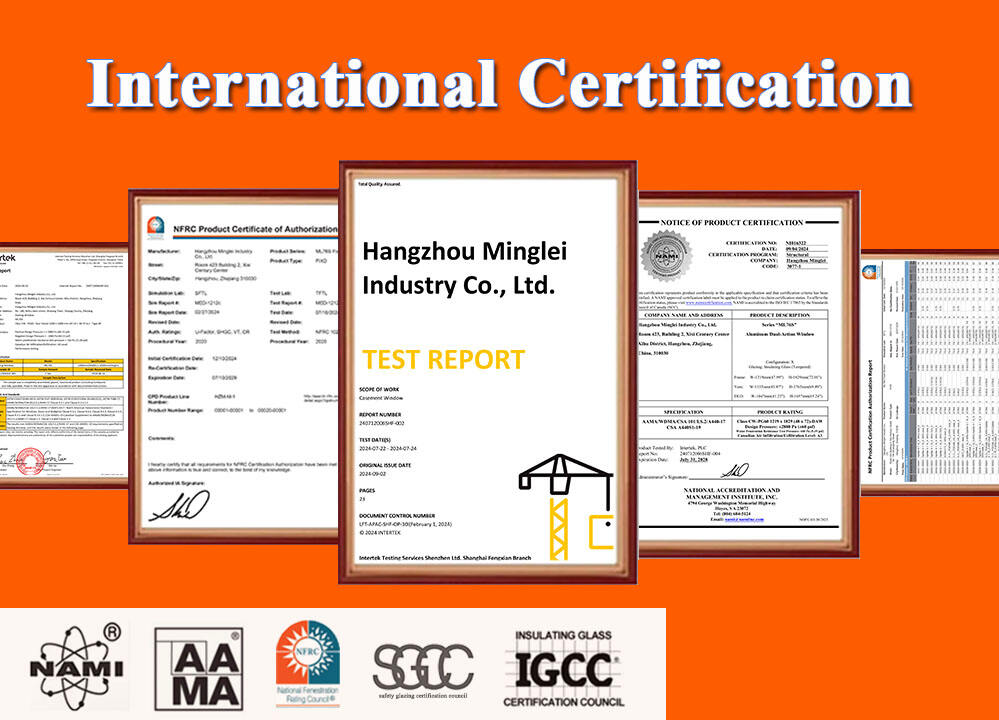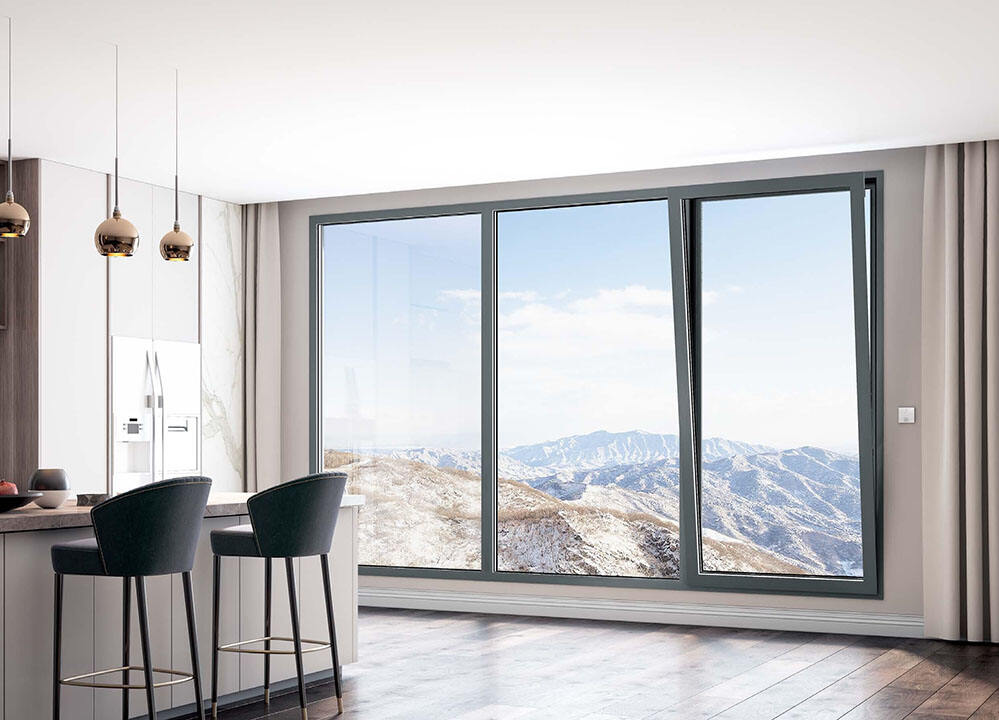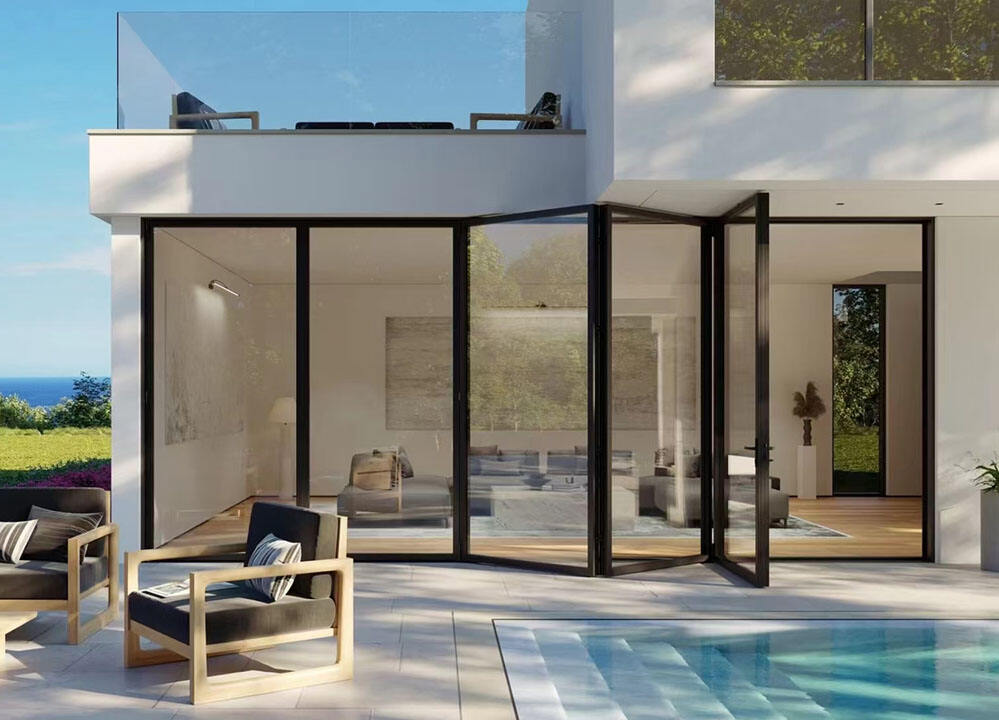توضيح ضمان الباب والنوافذ: ما الذي يشمله، وما الذي لا يشمله، ولماذا
يمثل الاستثمار في أبواب ونوافذ عالية الجودة لمنزلك قرارًا مهمًا. ويُعد الضمان الشامل بمثابة شبكة أمان لهذا الاستثمار، حيث يوفر راحة البال على مدى سنوات قادمة. ولكن ليس جميع الضمانات متساوية. ومن الضروري فهم ما يتم تغطيته — وكذلك ما لا يتم تغطيته — من أجل أن تكون مستهلكًا واعيًا.
سيقوم هذا المقال بتقسيم العناصر النموذجية لضمان الأبواب والنوافذ، وتحليل أسباب التغطية، ومساعدتك في فهم البنود الدقيقة.
الجزء الأول: ما الذي يجب أن يغطيه الضمان القوي
يجب أن يستهدف الضمان القوي بشكل أساسي العيوب في المواد والتصنيع. وهذا يعني أنه ينبغي تغطية المشكلات الناتجة عن عملية التصنيع أو جودة المواد، والتي تقع ضمن نطاق سيطرة الشركة المصنعة.
1. الإطارات والأجنحة:
التغطية: يجب أن تضمن مكونات الألومنيوم أو uPVC أو الخشب ضد التواء أو الانحناء أو التشقق أو التآكل. بالنسبة للألومنيوم المعزول حراريًا، يجب أن يشمل الضمان حاجز العزل نفسه ضد الفشل أو التدهور.
السبب: هذه عيوب جوهرية في المواد والبنية. تمثل الإطارات الهيكل العظمي للنافذة؛ وبالتالي فإن سلامتها أساسية لضمان السلامة الهيكلية وطول عمر المنتج. وعادةً ما تنبع هذه المشكلات من درجات مواد رديئة، أو سماكة غير كافية للملف الشخصي، أو عيوب في عملية التصنيع مثل البثق أو المعالجة الحرارية.

2. وحدة الزجاج العازل (IGU):
التغطية:
فشل الختم: ظهور ضباب أو تكاثف أو غبار بين ألواح الوحدة المزدوجة أو الثلاثية. وهذا يشير إلى فشل الختم المحكم على حافة الزجاج.
الكسر التلقائي: تشقق نادر يحدث في الزجاج المصقول بسبب شوائب داخلية (مثل كبريتيد النيكل).
السبب: المساحة الهوائية المغلقة ضرورية للأداء الحراري والصوتي. ويعتبر فشل الإغلاق نتيجة مباشرة لعيوب تصنيع في مواد أو عملية الإغلاق. وعلى الرغم من أن التكسير التلقائي للزجاج يُعد خطرًا م inherent في مادة الزجاج المقوى نفسها، فإن الشركات المصنعة ذات السمعة الطيبة تضمن منتجاتها وتوفر تغطية جزئية أو كاملة لمثل هذه الحالات.


3. الأجهزة:
التغطية: يجب أن تشمل الضمانات الحماية من الكسر أو الانحناء أو التآكل الكبير للمقابض، والمفصلات، والأقفال، وآلية القفل متعددة النقاط أثناء الاستخدام العادي.
السبب: تُعد الأجهزة هي "المفاصل والعضلات" للنافذة. ويؤثر فشلها بشكل مباشر على التشغيل والأمان والإغلاق. وعادةً ما تنتج هذه الأعطال عن استخدام مواد رديئة (مثل سبائك الزنك غير الجيدة) أو عيوب في التصنيع (مثل عيوب الصب).



4.فترات الضمان المتدرجة:
غالبًا ما يكون الضمان الخاص بالجودة متدرجًا. على سبيل المثال: ختم وحدة الزجاج المعزول (5-10 سنوات)، الأجهزة (5-10 سنوات)، الإطارات (من 20 سنة إلى العمر الافتراضي). يُعترف بهذا الهيكل باختلاف الفترات المتوقعة لعمر المكونات المختلفة ومخاطر تعطلها.
الجزء الثاني: ما الذي لا يتم تغطيته عادةً (الاستثناءات)
من الضروري فهم البنود المستثناة. عادةً ما تستثنى هذه العناصر لأنها تتعلق بالتثبيت، والصيانة، والأحداث الخارجة عن الإرادة البشرية، والتآكل الطبيعي الناتج عن الاستخدام.
1. المشكلات المتعلقة بالتثبيت:

غير مغطى: التسربات، والمسحات الهوائية، ومشاكل التشغيل، أو كسر الزجاج الناتجة عن التثبيت غير السليم.
السبب: يتحمل المصنع مسؤولية جودة المنتج، لكنه لا يملك أي سيطرة على عمل جهة التثبيت الخارجية. يُعد التثبيت العامل الأكثر أهمية من حيث أداء النافذة. ستفشل النافذة المثالية إذا تم تركيبها بشكل غير مستوٍ، أو بدون تلقيح مناسب، أو بختم غير كافٍ. تقع هذه المسؤولية على عاتق الجهة المنفذة للتثبيت.
2. الأضرار العرضية والأحداث الخارجة عن الإرادة البشرية:

غير مغطى: الأضرار الناتجة عن الكوارث الطبيعية (الإعصار، الزلازل)، أو الاصطدام العرضي، سوء الاستخدام، أو الأضرار المتعمدة.
السبب: تم تصميم الضمان لتغطية عيوب المنتج نفسه، وليس الأحداث الخارجية غير المتوقعة. يجب أن تُغطى هذا النوع من الأضرار بموجب وثيقة تأمين المنزل الخاصة بك.
3. التآكل الطبيعي:

غير مغطى: التصلب التدريجي أو تآكل واقيات الحواف المطاطية، والخدوش البسيطة على الزجاج أو الإطارات الناتجة عن التنظيف، والتلاشي التدريجي للتشطيبات بسبب التعرض للشمس.
السبب: مثل إطارات السيارة، فإن بعض المكونات لها عمر خدمة محدود. تعد الواقيات المطاطية مواد استهلاكية وقد تحتاج إلى استبدال كل 5-10 سنوات كجزء من الصيانة العادية—وهذا لا يُعد عيبًا في التصنيع.
4. عدم الصيانة:

غير مغطى: الفشل الناتج عن عدم التنظيف الروتيني، أو عدم التشحيم، أو عدم التعديل. ◦ السبب: تستند الضمانات المقدمة من الشركة المصنعة إلى افتراض أن مالك المنزل سيقوم بالصيانة الأساسية كما هو موضح في دليل المستخدم (مثل إزالة الحطام من المسارات، وتزييت الأجزاء المتحركة). يمكن أن يؤدي الإهمال في ذلك إلى تقليل عمر المنتج بشكل كبير، وحينها تنتقل المسؤولية إلى المالك.
أهم النقاط التي يجب معرفتها لمُلاك المنازل الواعين
- اقرأ واحتفظ: اقرأ دائمًا وثيقة الضمان كاملة قبل الشراء. احتفظ بشهادة الضمان وإيصال الشراء ودليل المستخدم في مكان آمن.
- وضح المسؤولية: اسأل عما إذا كان الضمان يشمل "المنتج فقط" أم يشمل "العمل والمنتج معًا". ويُعد الأخير، الذي تقدمه غالبًا شركة التركيب، أكثر شمولاً من حيث الحماية.
- تحقق من إمكانية التحويل: إذا كنت تخطط لبيع منزلك، فتأكد مما إذا كان الضمان قابلاً للتحويل إلى المالك الجديد. فقد يكون ذلك نقطة بيع قيّمة.
- قم بالصيانة الدورية: اتبع إرشادات الصيانة البسيطة التي يحددها المصنّع. فهذا لا يحافظ فقط على أداء النوافذ والأبواب بشكل مثالي، بل يعزز أيضًا موقفك في حال تطلب الأمر تقديم مطالبة ضمن الضمان.
الاستنتاج:
إن ضمان الأبواب والنوافذ الصادق هو إعلان من المصنّع عن ثقته بمنتجه. ويجب أن يغطي بوضوح العيوب الأولية في المواد والتصنيع، مع استثناء الأمور المتعلقة بالتركيب أو الحوادث أو التآكل الطبيعي الناتج عن مرور الزمن. وبصفتك مستهلكًا، فإن فهم حدود هذه "شبكة الأمان" يمكنّك من محاسبة الأطراف المسؤولة بشكل صحيح، ويكفل أن يستمر استثمارك في توفير الراحة والكفاءة والجمال التي دفعت مقابلها.
 EN
EN
 AR
AR
 CS
CS
 DA
DA
 NL
NL
 FI
FI
 FR
FR
 DE
DE
 EL
EL
 HI
HI
 IT
IT
 JA
JA
 KO
KO
 PL
PL
 PT
PT
 RU
RU
 ES
ES
 SV
SV
 IW
IW
 ID
ID
 LV
LV
 LT
LT
 SR
SR
 SK
SK
 SL
SL
 UK
UK
 VI
VI
 ET
ET
 HU
HU
 MT
MT
 TH
TH
 TR
TR
 FA
FA
 MS
MS
 GA
GA
 HY
HY
 UR
UR
 BN
BN
 GU
GU
 TA
TA














